Pills instead of a pump-that’s the big promise here. Patients with gastric (stomach) cancer often ask whether an oral chemo can replace infusional 5-FU without losing ground. Capecitabine can do that in several settings, but not all. Here’s a clear, evidence-backed look at when it helps, when to skip it, and how to use it safely.
TL;DR
- Capecitabine is an oral prodrug of 5-FU. In many gastric cancer regimens, it can replace 5-FU with similar outcomes.
- Strongest roles: adjuvant after D2 gastrectomy (XELOX) and first-line metastatic combos (with oxaliplatin or cisplatin).
- Perioperative standard in Western practice is FLOT (with infusional 5-FU). Capecitabine isn’t in classic FLOT, but remains a solid option when pumps/ports are a poor fit.
- Know the pitfalls: hand-foot syndrome, diarrhea, interactions (warfarin, phenytoin), renal dosing, DPD deficiency testing.
- Pick the regimen by goals (cure vs control), surgery type, HER2/PD-L1 status, fitness, kidney function, and your tolerance for ports and clinic time.
Where capecitabine fits in gastric cancer care
The simple version: capecitabine turns into 5-FU inside the body. Tumor cells often carry more thymidine phosphorylase, an enzyme that helps make the active drug, so levels climb where you want them most. The upshot is familiar 5-FU activity in a pill you swallow at home. The way capecitabine is used depends on the goal of treatment and the setting.
Three main places it shows up:
- Adjuvant therapy (after surgery): After a D2 gastrectomy, capecitabine plus oxaliplatin (often called XELOX or CAPOX) improves disease-free and overall survival compared to surgery alone. This made XELOX a go-to in East Asia and a common option elsewhere for node-positive or high-risk cases.
- First-line metastatic/unresectable disease: Capecitabine pairs well with oxaliplatin (CAPOX) or cisplatin (XP). Trials showed it can replace continuous-infusion 5-FU with no loss of benefit, and sometimes a practical edge-no pump, fewer lines.
- Targeted/immunotherapy backbones: In HER2-positive disease, trastuzumab gets added to XP/CAPOX; in PD-L1-expressing tumors, nivolumab added to a fluoropyrimidine-platinum backbone is now standard in many regions. Capecitabine is one of those fluoropyrimidines.
One place where capecitabine is not the usual star: perioperative therapy in Western practice. The FLOT regimen (docetaxel, oxaliplatin, leucovorin, and infusional 5-FU) raised the bar for resectable, fit patients. Most centers still use FLOT as written. If you can’t safely receive FLOT or you want to avoid a pump, your team may consider alternatives that use capecitabine, but that’s individualized.
So the job it does best? Stand in for 5-FU without sacrificing outcomes, especially in adjuvant XELOX and in metastatic first-line doublets.
What the evidence says and how to choose a regimen
Let’s anchor this in data, then translate it into real choices.
- REAL-2 trial (Lancet, 2008): In advanced esophagogastric cancer, capecitabine was non-inferior to infusional 5-FU when swapped into ECF-type regimens, and oxaliplatin could replace cisplatin. This opened the door to oral-based backbones like ECX and CAPOX.
- CLASSIC trial (Lancet, 2012; JCO, 2015 update): After D2 gastrectomy, adjuvant XELOX (8 cycles) improved disease-free and overall survival versus surgery alone. This is the strongest single reason capecitabine is common after D2 resections.
- ToGA trial (Lancet, 2010): In HER2-positive advanced disease, adding trastuzumab to cisplatin plus a fluoropyrimidine (5-FU or capecitabine) improved survival. Capecitabine was a valid fluoropyrimidine choice.
- CheckMate 649 (NEJM, 2021): Nivolumab plus a fluoropyrimidine-oxaliplatin backbone improved survival in PD-L1 CPS ≥5 (benefit extended to the ITT population). Capecitabine + oxaliplatin was an accepted backbone in the study.
- FLOT4-AIO (NEJM, 2019): Perioperative FLOT outperformed older ECF/ECX regimens in resectable disease. Note: capecitabine was part of ECX, not FLOT; this is why many centers still prefer infusional 5-FU when aiming to cure in the perioperative setting.
- GO2 trial (Lancet, 2019): In older/frail patients with advanced gastroesophageal cancer, lower-intensity oxaliplatin-capecitabine dosing (Level C) was non-inferior for quality-adjusted survival and reduced toxicity. Useful when fitness is marginal.
Put another way: capecitabine carries level-one evidence in adjuvant therapy post-D2 and in metastatic doublets. It’s acceptable as the fluoropyrimidine partner when adding trastuzumab (HER2+) or nivolumab (PD-L1+), and it features in regimens friendly to outpatient life.
Here’s a quick reference table you can screenshot and bring to clinic:
| Setting | Common regimen | Capecitabine schedule (typical) | Key evidence | Signal | Notes |
|---|---|---|---|---|---|
| Adjuvant (post-D2 gastrectomy) | XELOX (CAPOX) | 1000 mg/m² BID, Days 1-14, q21d × 8 cycles | CLASSIC, 2012; JCO OS update 2015 | DFS/OS benefit vs surgery alone | Standard in East Asia; widely used elsewhere when D2 done |
| Metastatic 1st line | CAPOX (± nivolumab); XP (± trastuzumab if HER2+) | CAPOX: 1000 mg/m² BID D1-14 q21d; XP: 1000-1250 mg/m² BID D1-14 q21d | REAL-2, 2008; CheckMate 649, 2021; ToGA, 2010 | Non-inferior to 5-FU; IO/targeted add-ons improve OS | Pick partner by HER2, PD-L1, comorbidities |
| Perioperative (resectable) | FLOT (reference standard) | Not part of classic FLOT | FLOT4-AIO, 2019 | Superior to ECF/ECX | Capecitabine sits outside this standard; consider if pumps are a barrier (case-by-case) |
| Older/frail metastatic | Reduced-dose CAPOX | e.g., 625-825 mg/m² BID D1-21 q21-28d (varies) | GO2, 2019 | Lower-intensity non-inferior for QALYs | Start gentler; escalate only if well tolerated |
| Concurrent chemoradiation (select cases) | Capecitabine alone with RT | 825 mg/m² BID, on radiation days | Multiple phase II/III in GI sites | Feasible radiosensitizer | Institutional practice varies in gastric; watch mucositis/diarrhea |
Decision cues that actually help:
- Surgery done with a D2 dissection? XELOX for 6-8 cycles is a proven adjuvant path.
- Unresectable/metastatic, HER2-positive? Trastuzumab + XP or CAPOX is a standard go-to.
- Unresectable/metastatic, PD-L1 CPS ≥5? Nivolumab + CAPOX is favored in many guidelines and is backed by survival data.
- Fit, resectable tumor in the West? FLOT remains the default; discuss trade-offs if avoiding a pump is a priority.
- Older/frail or worried about side effects? Start with reduced-dose CAPOX as in GO2; prioritize quality of life.
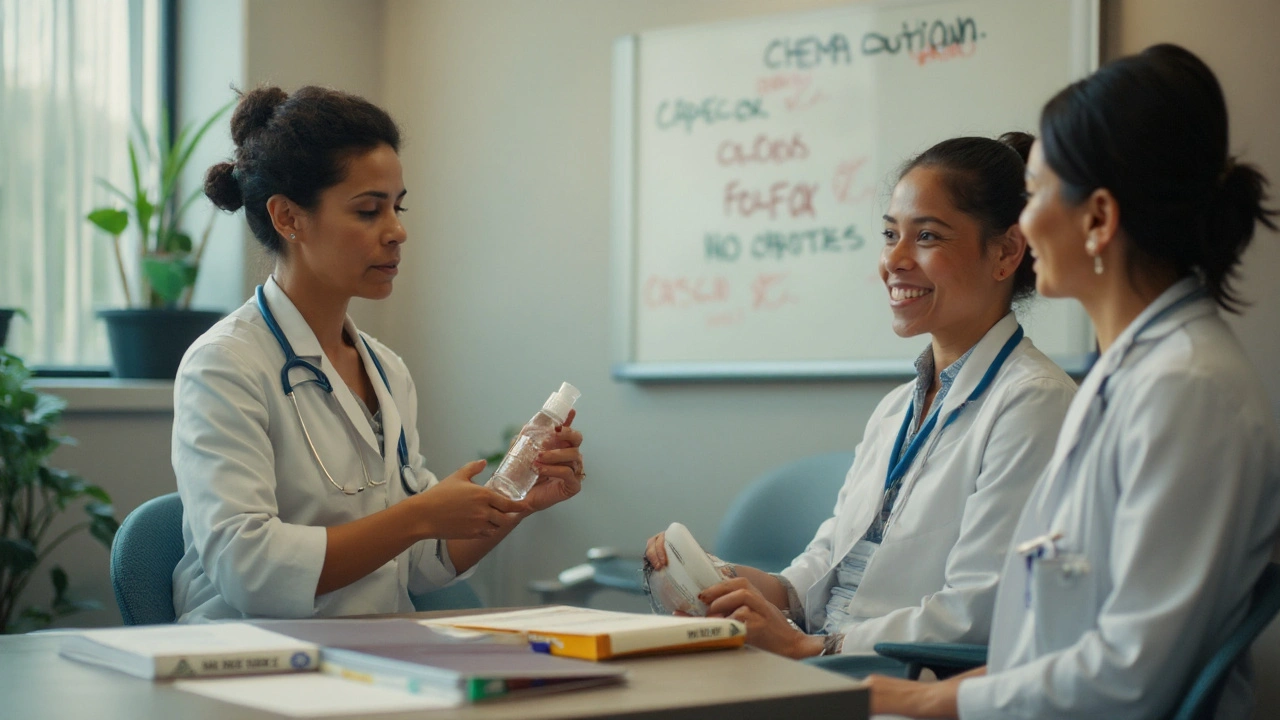
How to take it right: dosing, side effects, and real-world tricks
Standard dosing you’ll see on a clinic plan:
- With oxaliplatin (CAPOX/XELOX): 1000 mg/m² twice daily on Days 1-14, every 21 days.
- With cisplatin (XP): 1000-1250 mg/m² twice daily on Days 1-14, every 21 days.
- As a radiosensitizer: 825 mg/m² twice daily only on radiation days.
How to take it:
- Swallow tablets within 30 minutes after a meal (breakfast and dinner works for most). Food softens peaks and lowers stomach upset.
- Do not crush or split unless your team approves. Wash hands after handling.
- If you miss a dose, skip it; don’t double up later.
- Hydrate well. Keep a daily log of doses and symptoms.
When to hold or cut the dose (rules of thumb your clinic likely uses):
- Hand-foot syndrome (HFS): If redness/blistering starts to limit daily tasks (grade 2+), pause capecitabine; restart at a lower dose once it calms.
- Diarrhea: Stop and call if ≥4 extra stools/day, any nighttime diarrhea, or if you feel lightheaded. Loperamide is first-line, but dehydration is dangerous.
- Mucositis: Painful mouth sores that affect eating? Hold and treat; restart reduced.
- Neutropenia/fever: Fever ≥38.0°C (100.4°F) is an emergency-head to urgent care or ER and call the team on the way.
Kidneys and dosing:
- Creatinine clearance 30-50 mL/min: start around 75% of the full dose.
- < 30 mL/min: generally avoid capecitabine. Discuss alternatives.
DPD (DPYD) testing-worth asking about:
- People with low dihydropyrimidine dehydrogenase activity can have life-threatening toxicity from 5-FU/capecitabine.
- Prospective trials (e.g., Lancet Oncology 2016) showed genotype-guided dose reductions cut severe toxicity without hurting cancer control.
- If you’re an intermediate metabolizer, many centers start at 50% dose and adjust. Poor metabolizers often avoid fluoropyrimidines entirely.
Common side effects and what actually helps:
- Hand-foot syndrome: Use 10-20% urea cream twice daily from Day 1. Moisturize after showers. Avoid tight shoes, long walks on hot days, and friction from tools or weights. Ice packs after activity can help.
- Diarrhea: Keep loperamide at home. First loose stool: 4 mg, then 2 mg after each episode (max per your clinic). Sip oral rehydration solutions, not just water. Bananas, rice, applesauce, toast are fine; avoid dairy and greasy foods.
- Mouth sores: Rinse with baking-soda/salt solution (¼ tsp each in a cup of water) 3-4 times daily. Soft toothbrush. Call early for prescription mouthwashes.
- Nausea: Take anti-nausea meds as prescribed with the morning dose. Ginger ale and small, bland meals help.
- Fatigue: Aim for a 20-30 minute walk most days. Short daytime naps beat long ones. Keep a consistent sleep time.
- Cold sensitivity/tingling: That’s usually oxaliplatin, not capecitabine. Warm gloves, avoid ice drinks for a few days after infusion.
Drug interactions to respect:
- Warfarin: Capecitabine can raise INR and bleeding risk. More frequent INR checks and dose tweaks are common.
- Phenytoin: Levels can rise; you’ll need monitoring and dose adjustment.
- Antacids/PPIs: Data are mixed on relevance. If reflux is heavy, talk to your team about timing or alternatives.
- All supplements: Bring the list. St. John’s wort and high-dose antioxidants can cause issues during chemo.
Fertility, sex, alcohol:
- Use contraception during treatment and for a few months after (ask for exact timing by sex). Capecitabine can harm a fetus.
- No breastfeeding during treatment and for 2 weeks after the last dose.
- Light alcohol on off-days is usually okay if your liver tests are normal and your team agrees; skip it if you’re nauseated or dehydrated.
Quick checklists you can print:
Before you start
- Ask about DPYD testing and baseline kidney function.
- Review all meds, vitamins, and herbs for interactions.
- Pick a dosing time linked to meals and set phone reminders.
- Stock urea cream, loperamide, a thermometer, and soft foods.
- Line up lab dates and infusion days if on CAPOX.
Daily habits on treatment days
- Take pills within 30 minutes after breakfast and dinner.
- Moisturize hands/feet morning and night.
- Drink 2-3 liters fluid unless on restriction.
- Walk daily; avoid hot tubs and tight footwear.
- Log any new symptoms with date/time.
Call the clinic now if
- Fever ≥38.0°C (100.4°F), shaking chills, or shortness of breath.
- Diarrhea ≥4 stools/day above baseline or any nighttime diarrhea.
- Hand-foot pain that limits tasks or any open blisters.
- Can’t keep fluids down for 12 hours.
- Unusual bleeding, black stools, severe mouth pain.
FAQs and what to do next
Can capecitabine really replace a 5-FU pump?
Often, yes. Trials like REAL-2 showed it can swap in without hurting outcomes in advanced disease, and it anchors adjuvant XELOX after D2 surgery. If your plan relies on FLOT or a study that mandates infusional 5-FU, you stick with the pump. Otherwise, it’s a legitimate substitute in many backbones.
How many cycles will I need?
Adjuvant XELOX is usually 6-8 cycles. In metastatic disease, you keep going while it helps and side effects stay manageable; some teams drop oxaliplatin after 3-4 months and continue capecitabine alone to limit neuropathy.
Can I take it if my kidneys aren’t great?
Yes, with care. If creatinine clearance is 30-50 mL/min, you usually start around 75% dose. Below 30 mL/min, most clinicians avoid capecitabine. Always individualize.
Do I need DPYD testing?
It’s increasingly common and, in my view, smart if available. It reduces the chance of a severe first-cycle reaction. If testing isn’t available, you start carefully and report symptoms early.
What about cost?
The drug is available as a generic in many regions. Out-of-pocket cost varies by country and insurance. Ask about patient assistance programs; your clinic pharmacy usually knows the quiet shortcuts.
Can I crush the tablets?
Try not to. If swallowing is hard, talk to your team-there are safe handling steps and sometimes alternative dosing approaches.
What if I miss a dose?
Skip it and take the next one as scheduled. Don’t double up.
Is neuropathy from capecitabine?
Usually not. Neuropathy is most often from oxaliplatin. That’s why many people stop oxaliplatin after a few months and continue maintenance.
Does it work with immunotherapy or HER2 drugs?
Yes. Nivolumab + CAPOX is standard in many places for PD-L1 CPS ≥5. Trastuzumab + XP/CAPOX is standard for HER2-positive tumors. Your tumor’s HER2 and PD-L1 tests guide these decisions.
Food and supplements?
Take after meals. Avoid grapefruit and St. John’s wort. Be cautious with high-dose antioxidants during active chemo; discuss any supplement first.
How do I choose between CAPOX and FOLFOX?
CAPOX saves pump and chair time. FOLFOX can be easier on hands/feet for some and may be used when kidneys are borderline (since dose adjustments differ). Both are valid; practical life issues often tip the scale.
Next steps by scenario (use this as a quick map):
- Resectable, fit, node-positive: Talk about FLOT vs alternatives. If you’re pump-averse and the team agrees, ask if a capecitabine-based plan is reasonable in your case.
- Post-D2 gastrectomy: Bring up XELOX adjuvant (6-8 cycles). Ask about DPYD testing and a skin care plan from Day 1.
- Metastatic, HER2-positive: Discuss trastuzumab + XP/CAPOX. Confirm HER2 testing method (IHC/ISH) and whether to add immunotherapy if PD-L1 is high.
- Metastatic, PD-L1 CPS ≥5: Nivolumab + CAPOX or FOLFOX. Check for contraindications to immunotherapy.
- Older/frail or many comorbidities: Consider reduced-dose CAPOX per GO2, with early de-escalation if side effects show up.
- Renal impairment or suspected DPD deficiency: Consider alternative backbones or marked dose reductions under close monitoring.
Troubleshooting common roadblocks:
- Early severe HFS (by Cycle 1 Week 2): Hold drug, start 10-20% urea and petroleum-based emollients, consider pyridoxine only if your team uses it, and restart at 75-85% dose.
- Persistent diarrhea despite loperamide: Rule out infection, add prescription antidiarrheals (e.g., diphenoxylate/atropine), hold chemo, rehydrate IV if needed.
- INR spikes on warfarin: Switch to LMWH or DOAC if appropriate, or plan tight INR checks twice weekly during the first cycle.
- Pill burden/forgetfulness: Use a day-of-the-week organizer, pair doses with brushing teeth, and set two alarms 12 hours apart.
- Rising creatinine: Recalculate clearance; reduce dose or extend the off-week; reassess causes (dehydration, meds).
Key sources you can mention in clinic: REAL-2 (Lancet, 2008), CLASSIC (Lancet, 2012; JCO, 2015), FLOT4-AIO (NEJM, 2019), ToGA (Lancet, 2010), CheckMate 649 (NEJM, 2021), GO2 (Lancet, 2019), and DPYD-guided dosing trials (Lancet Oncology, 2016; multiple meta-analyses in 2020-2023).
If your bottom line is convenience without giving up results, capecitabine earns a spot at the table. The winning formula is simple: test smart (HER2, PD-L1, sometimes DPYD), pick the right partner drug, start at a dose your kidneys and skin can live with, and speak up early if side effects creep in.



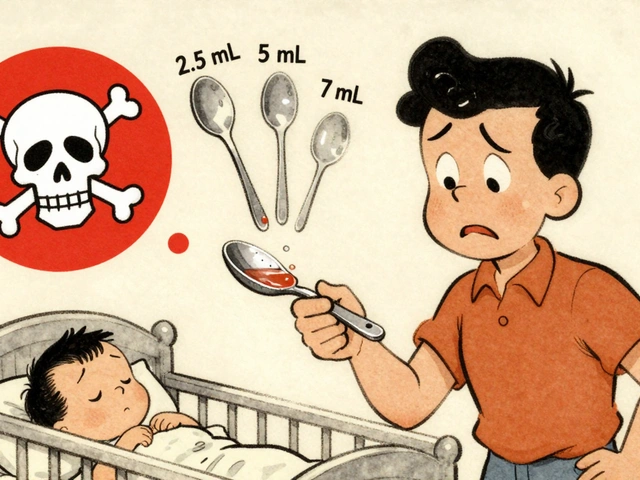
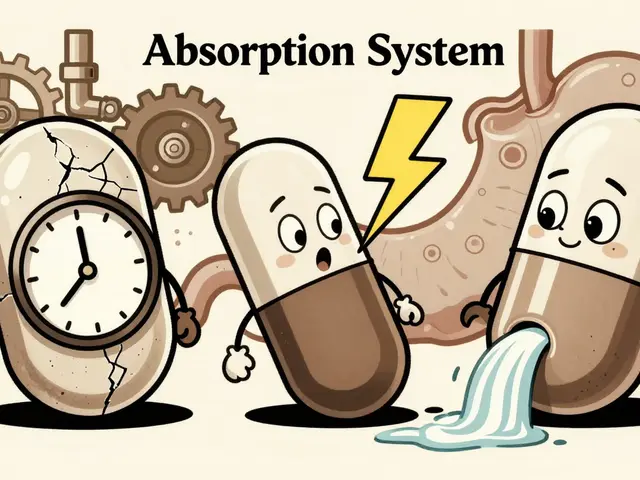


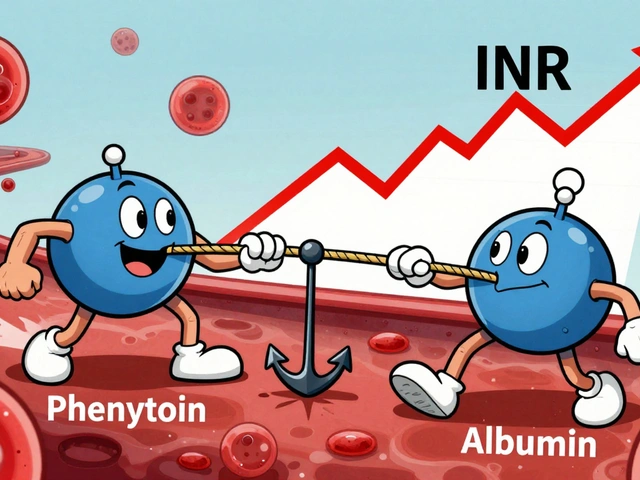
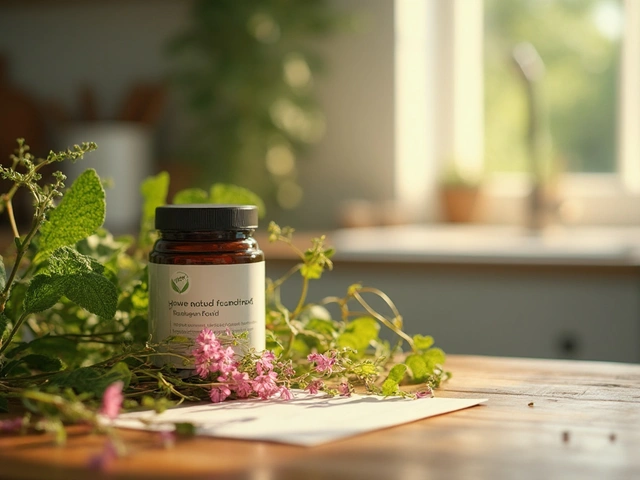
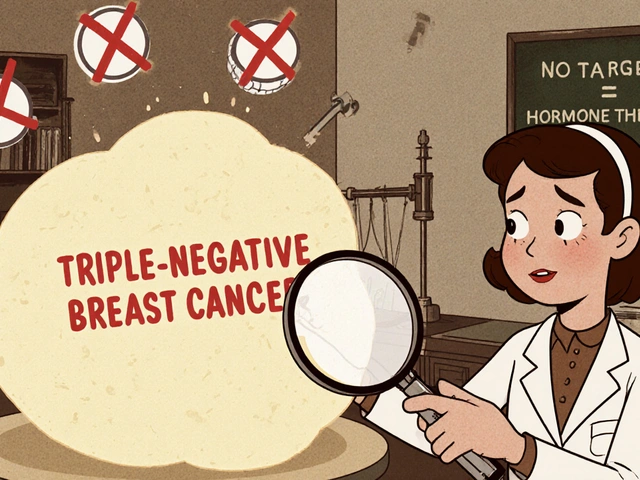
Forget the hype – capecitabine is the only oral fluoropyrimidine that truly stands shoulder‑to‑shoulder with infusion 5‑FU, delivering comparable survival without the nightmare of pumps and ports. The evidence from CLASSIC and REAL‑2 screams that you don’t need a tiny metal catheter to get the same tumor kill. When surgeons pull off a D2 gastrectomy, XELOX becomes the gold‑standard adjuvant, and the pill form just makes life bearable. If you’re still stuck on a drip, you’re paying for inconvenience, not benefit. The pharmacology is crystal clear: tumor‑localized thymidine phosphorylase flips the pro‑drug into 5‑FU right where it matters. Stop listening to the pump‑centric lobby and demand oral therapy when it’s on the guideline table!
It’s a moral outrage that the system still forces patients into clunky infusion setups while a simple pill can do the same job. Every extra hospital visit drags down quality of life and inflates costs that most families can’t afford. The data are in the open – capecitabine matches 5‑FU in adjuvant and metastatic settings, so there’s no ethical excuse to keep people tethered to machines. We should be championing convenience and dignity, not glorifying unnecessary invasiveness.
hey folks capecitabine is solid when you need oral chemo it avoids the pump hassle and works well after a D2 gastrectomy you’ll see it in XELOX protocols the side‑effects are manageable with good skin care and hydration just keep an eye on the kidneys and hand‑foot symptoms and you’ll be fine
Alright, let’s dive deep into the glorious world of capecitabine – the little pill that pretends to be a superhero while quietly stealing the spotlight from the bulky 5‑FU drips. First off, the drug’s chemistry is pure poetry: a pro‑drug that gets cleaved by tumor‑rich thymidine phosphorylase, delivering 5‑FU exactly where you want it, no more, no less. The CLASSIC trial proved that after a D2 gastrectomy, XELOX (capecitabine plus oxaliplatin) boosts disease‑free survival, so the pill isn’t just a convenience, it’s a proven weapon.
Now, most patients love the idea of swallowing a tablet over lugging around a pump, but let’s not pretend the side‑effects are a free lunch. Hand‑foot syndrome can turn your soles into a sandpaper nightmare, so stash that urea cream in your medicine cabinet and moisturize like a maniac. Diarrhea is another unwelcome guest – keep loperamide handy and stay hydrated, because dehydration + chemo = a recipe for disaster.
Kidney function is the silent gatekeeper here; if your creatinine clearance dips below 30 mL/min, you’re basically signing a death warrant for capecitabine, so dosage adjustments or an alternative regimen become mandatory. And don’t even get me started on DPYD testing – those poor metabolizers can experience life‑threatening toxicity if you skip that genetic screen.
Interaction wise, watch out for warfarin (INR spikes), phenytoin (levels surge), and any herbal supplements masquerading as “natural” boosters. The drug doesn’t care about your smoothie habits, it will still wreak havoc if you’re not careful.
When it comes to combining with targeted agents, capecitabine plays nice with trastuzumab in HER2‑positive disease and with nivolumab when PD‑L1 expression is high. The data from ToGA and CheckMate 649 back this up, so you can safely build a multi‑modal attack while staying pump‑free.
Remember, the dosing schedule is typically 1000 mg/m² BID on days 1‑14 of a 21‑day cycle – a rhythm that fits snugly into most patients’ lives. Missed a dose? Skip it, don’t double up – the last thing you want is an accidental overdose.
Finally, the psychosocial boost of ditching a port cannot be overstated. Fewer clinic trips, fewer needle sticks, and a sense of normalcy – that’s the real win. So, yes, capecitabine isn’t a miracle cure, but it’s a solid, evidence‑backed option that lets patients keep some control over their treatment journey. 😊
Capecitabine’s role in XELOX is firmly supported by the CLASSIC trial; its oral route simplifies administration while maintaining efficacy, making it a practical alternative to continuous infusion 5‑FU.
From a practical standpoint, capecitabine works best when paired with thorough patient education – proper hydration, skin care for hand‑foot syndrome, and regular labs to monitor renal function are key. In older or frail patients, the GO2 trial shows that a reduced dose of CAPOX can still preserve quality‑adjusted survival while cutting toxicity. It’s also worth noting that DPYD testing, where available, can prevent severe toxicities upfront. Overall, the drug fits nicely into both curative adjuvant settings after D2 gastrectomy and palliative metastatic regimens, especially when avoiding a pump improves adherence.
While the data parade capecitabine as a convenient stand‑in for 5‑FU, one must remember that every trial is a curated narrative, cherry‑picking endpoints that fit the sponsor’s agenda. The real world sees a spectrum of tolerability, and the glossy survival curves often mask the day‑to‑day struggle with hand‑foot toxicity. Moreover, the push for oral regimens can mask systemic inequities: patients without reliable pharmacy access or proper insurance coverage may end up under‑dosed or abandoned mid‑course. So, before we hail the pill as the hero, let’s keep a critical eye on the broader implications.
Capecitabine offers a solid alternative when infusion pumps are impractical, but careful monitoring of renal function and skin toxicity remains essential for patient safety.
Look, if you’re American you should demand oral chemo to cut the red tape – capecitabine does the job without the hassle of a pump.
Capecitabine isn’t a miracle, it’s just another pill 😒
The pharmacodynamic parity between capecitabine and 5‑FU is underscored by multiple phase‑III trials, rendering the oral formulation a pragmatic choice for both adjuvant and metastatic gastric cancer protocols.
Imagine the luxury of not being tethered to a pump – capecitabine lets you live a bit more like a normal person while still fighting the tumor.
The DPYD screening, though sometimes overlooked, can be a game‑changer; identifying intermediate metabolizers early lets clinicians tailor the capecitabine dose and avoid catastrophic toxicity, which is a win for both safety and efficacy.
If you’re wondering about dosing tweaks for renal impairment, the rule of thumb is to start at about 75 % of the full dose for a creatinine clearance of 30‑50 mL/min, and avoid the drug entirely below 30 mL/min unless you have a compelling reason.
Capecitabine works fine if you follow the guidelines.
Agreed, the practical tips on skin care and hydration make a huge difference – keep that urea cream handy and never underestimate the power of a good water bottle. 😅
Spot on, the philosophical musings aside, the real takeaway is that every patient’s context dictates whether capecitabine is the right fit, and we must stay flexible.
While the mainstream says capecitabine is safe, remember that pharma trials rarely disclose the full extent of off‑label data; some institutions have reported unexpected genotoxic signatures when the drug is combined with certain herbal supplements – stay skeptical.
Stay optimistic – with proper monitoring, capecitabine can be a reliable component of treatment, and many patients report feeling empowered when they can take their therapy at home.
Honestly, the drama around capecitabine is overblown; the drug works, the side‑effects are manageable, and the convenience factor is real. You just need a solid support system – a nurse who can guide you through dose adjustments, a pharmacist who knows the drug‑interaction maze, and a dermatologist ready with emollients. When the hand‑foot syndrome starts creeping in, slather on that urea cream like it’s sunscreen, keep your feet cool, and avoid any tight shoes. Hydration is non‑negotiable – sip water throughout the day, especially on treatment days. If you notice a dip in your creatinine clearance, hit pause and let your oncologist recalibrate the dose before you push forward. And remember, the pill isn’t a magic bullet; it’s part of a bigger strategy that may include HER‑2 targeting or immunotherapy. So keep the lines of communication open, track every symptom, and don’t let the fear of side‑effects stop you from completing the regimen.